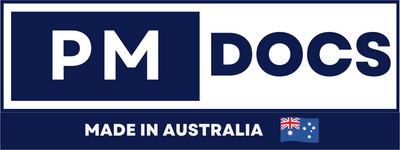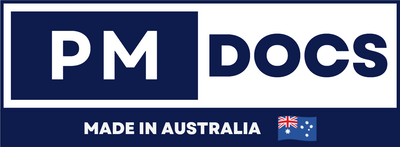ISO 14001
Introduction
ISO 14001 is an internationally recognized standard for environmental management systems. It provides a framework for organizations to demonstrate their commitment to environmental sustainability and minimize environmental impact. By implementing ISO 14001, companies can identify and address environmental risks, reduce waste and emissions, and enhance their overall environmental performance. This article will explore the critical components of ISO 14001, its benefits for organizations, and how to achieve certification whether you are a business owner, an environmental professional, or simply interested in sustainability.

What is the ISO 14001 Environmental Management System?
- The ISO 14001 Environmental Management System is a standard that specifies the requirements for an organization to manage its environmental performance effectively. It provides a framework for organizations to establish and maintain an environmental management system, considering environmental aspects, legal requirements, and objectives and targets.
- The ISO 14001 standard sets the criteria for identifying, monitoring, and controlling an organization's environmental aspects, such as air emissions, water usage, waste management, energy consumption, and other activities that can impact the environment. It also emphasizes the need for continual improvement in an organization's environmental performance.
What Does EMS Mean?
ISO 14001 EMS stands for International Organization for Standardization (ISO) 14001 Environmental Management System. It is a globally recognized standard that provides guidelines and requirements for organizations to establish and maintain an effective environmental management system. The purpose of ISO 14001 EMS is to help organizations minimize their environmental impact, comply with applicable environmental regulations, and continuously improve their environmental performance.
How to Become ISO 14001 Certified?
To become ISO 14001 certified, follow these steps:
- Understand the Requirements: Familiarize yourself with the ISO 14001 standard and its requirements. This international standard sets out criteria for an effective environmental management system (EMS).
- Conduct a Gap Analysis: Assess your current environmental management practices and systems against the requirements of ISO 14001. Identify areas where your organization falls short and needs improvement.
- Develop an Implementation Plan: Create a detailed plan to address the gaps identified in the gap analysis. This plan should outline the necessary actions, responsibilities, resources, and timelines to meet the standard's requirements.
- Establish an Environmental Management System: Implement the processes and procedures to establish an effective EMS within your organization. This includes developing policies, objectives, and targets related to environmental performance.
- Train Employees: Ensure all relevant employees are trained on the ISO 14001 standard, their roles in the EMS, and the processes and procedures in place to meet the standard's requirements.
- Implement the EMS: Implement the EMS by conducting environmental impact assessments, monitoring and measuring environmental performance, implementing corrective actions, and communicating internally and externally about your environmental initiatives.
- Conduct Internal Audits: Regularly review and assess your EMS to ensure it remains effective and compliant with ISO 14001. Identify any areas needing improvement or corrective actions.
- Corrective Actions: Address any nonconformities or areas needing improvement identified during internal audits. Take necessary corrective actions to resolve these issues and prevent their recurrence.
- Management Review: Conduct regular reviews with top management to assess the EMS's suitability, adequacy, and effectiveness. Use this feedback to make necessary improvements and drive continual improvement in the EMS.
- Select a Certification body: Choose an accredited certification body to audit your EMS and determine compliance with ISO 14001. Ensure the certification body is competent and recognized by the relevant accreditation body in your country.

What are the Fees Associated with Obtaining ISO 14001 Certification
The fees associated with obtaining ISO 14001 certification in English can vary depending on the certification body and the size and complexity of the organization. However, here are some standard fees to consider:
- Certification Body Fees: These are the fees the certification body charges for conducting the certification process. They typically include costs for document review, on-site audits, and certification issuing.
- Training and Consultant Fees: Many organizations hire a consultant or trainer to help them navigate the ISO 14001 requirements and implement the necessary changes. The fees for such services can vary depending on the consultant's expertise and experience.
- Documentation and Training Materials: Organizations may need to invest in ISO 14001 documentation templates, training materials, and related resources to support their implementation efforts. The cost of these materials can vary depending on the provider and the level of detail included.
- Internal Resources and Time: Obtaining ISO 14001 certification requires the organization's commitment to internal resources and time. This includes time employees spend implementing and maintaining the environmental management system and any costs associated with internal audits and management reviews.
- Surveillance Audits: After obtaining certification, organizations must undergo periodic surveillance audits to ensure ongoing compliance with ISO 14001. These audits are typically conducted annually or every few years, depending on the certification body's requirements, and can incur additional fees.
Why Do You Need ISO 14001 Certification?
ISO 14001 certification is a globally recognized standard for environmental management systems. Organizations that achieve this certification have demonstrated their commitment to minimizing their environmental impact, complying with applicable environmental laws and regulations, and continuously improving their environmental performance.
Here are some reasons why organizations need ISO 14001 certification:
- Legal Compliance: ISO 14001 certification helps organizations meet legal and regulatory requirements related to environmental management. It ensures that processes are in place to identify and comply with environmental laws and regulations, reducing the risk of non-compliance and associated penalties.
- Enhanced Credibility: ISO 14001 certification provides organizations with credible and internationally recognized proof of their commitment to environmental management. It can enhance the organization's reputation and provide a competitive advantage when dealing with customers, suppliers, and other stakeholders.
- Improved Efficiency: Implementing ISO 14001 helps organizations identify and eliminate inefficiencies in their processes that may be causing excessive environmental impact. By adopting more sustainable practices, organizations can reduce waste, conserve resources, and optimize their energy consumption, leading to cost savings and improved operational efficiency.
- Stakeholder Engagement: ISO 14001 certification demonstrates an organization's dedication to environmental protection and sustainability. This commitment can help attract environmentally conscious customers, investors, and employees who align with the organization's values and objectives.
- Risk Management: ISO 14001 helps organizations identify and manage environmental risks and opportunities. By comprehensively assessing potential environmental impacts, organizations can implement measures to minimize risks and take advantage of opportunities to improve environmental performance.
- Continuous Improvement: ISO 14001 emphasizes continuous improvement, requiring organizations to establish and monitor environmental objectives and targets. Through ongoing evaluation, organizations can identify areas for improvement and implement strategies to reduce their environmental impact further.
What are The ISO 14001 Clauses?
The ISO 14001 standard consists of 10 clauses. These clauses outline the requirements for implementing and maintaining an environmental management system.
- Scope: This clause defines the boundaries and applicability of the environmental management system.
- Normative References: This clause lists any other applicable standards and regulations that should be considered while implementing the environmental management system.
- Terms and Definitions: This clause defines key terms used throughout the standard.
- Context of the Organization: This clause requires organizations to determine the external and internal factors that may impact their environmental management system and establish the scope of their system.
- Leadership: This clause emphasizes the commitment and involvement of top management in establishing and maintaining the environmental management system.
- Planning: This clause focuses on understanding the organization's environmental impact and setting objectives and targets to minimize these impacts.
- Support: This clause outlines the resources, competency, awareness, and communication requirements for effectively implementing the environmental management system.
- Operation: This clause addresses the implementation of the environmental management system, including planning, control, and operational processes.
- Performance Evaluation: This clause highlights the need to monitor, measure, and evaluate environmental performance and communicate this performance internally and externally.
- Improvement: This clause requires organizations to continually improve their environmental management system based on the results of performance evaluations and the identified areas for improvement.

What are ISO 14001 Controls?
ISO 14001 controls refer to the specific measures and procedures organizations implement to achieve compliance with the ISO 14001 standard. ISO 14001 is an internationally recognized standard for the Environmental Management System (EMS) criteria. It provides a framework for organizations to manage and minimize their environmental impact and improve sustainability.
The controls within ISO 14001 are designed to ensure that an organization's environmental objectives and targets are met. These controls typically include:
- Legal and Regulatory Compliance: Organizations must identify and comply with all applicable environmental laws and regulations, ensuring they have the necessary permits and licenses.
- Environmental Policy: Organizations must establish and communicate their environmental policy, outlining their commitment to environmental performance improvement and pollution prevention.
- Planning: This control involves developing objectives, targets, and action plans to minimize environmental impact and achieve sustainability goals.
- Resource Management: Organizations must allocate the necessary resources to implement and maintain their EMS effectively. This includes providing employees with training, tools, and equipment.
- Operational Controls: Organizations need to identify and implement controls to manage the specific environmental aspects of their operations, such as waste management, energy use, and water consumption.
- Emergency Preparedness and Response: Organizations must develop and implement procedures to effectively respond to potential environmental emergencies, such as spills or accidents.
- Monitoring and Measurement: This control requires organizations to establish a system for monitoring and measuring their environmental performance. This may involve regular audits, inspections, or assessments.
- Documentation and Record-Keeping: Organizations must maintain records of their EMS activities, including policies, procedures, and evidence of compliance with legal and regulatory requirements.
- Communication and Stakeholder Engagement: This control emphasizes the importance of engaging with internal and external stakeholders to raise awareness, gather feedback, and ensure transparency in environmental management.
- Continuous Improvement: Organizations must demonstrate a commitment to ongoing improvement in their environmental performance. This control involves regularly reviewing and updating the EMS to align with changing circumstances and new environmental challenges.

How Much Time Is Required to Obtain ISO 14001 Certification?
The time required to obtain ISO 14001 certification can vary depending on several factors, including the size and complexity of the organization and its existing environmental management practices.
The process typically involves the following steps:
- Gap Analysis: This initial assessment identifies the organization's existing environmental management practices and determines the gaps that must be addressed to meet ISO 14001 requirements. The duration of this step can range from a few days to a few weeks.
- Implementation: This step involves implementing the necessary measures and changes to meet the ISO 14001 requirements. The time required for implementation depends on the organization's current practices and ability to allocate resources for the necessary actions. Organizations can fully implement the requirements for several months to a year.
- Documentation: ISO 14001 requires organizations to develop documentation related to their environmental management system, including policies, procedures, and records. The duration for this step depends on the organization's existing documentation practices and its ability to develop and implement the required documentation.
- Internal Audit: Before seeking certification, organizations need to conduct internal audits to assess the effectiveness and compliance of their environmental management system with ISO 14001 requirements. Depending on the organization's size and complexity, this step can take several days to a few weeks.






